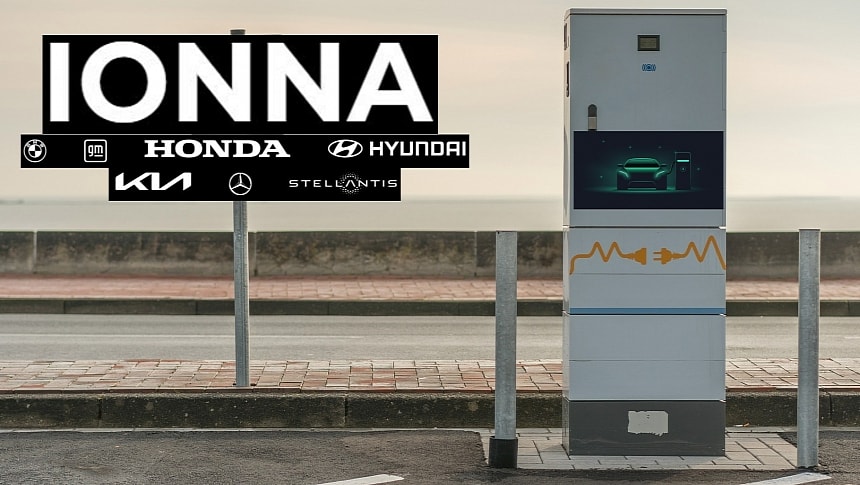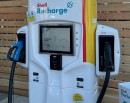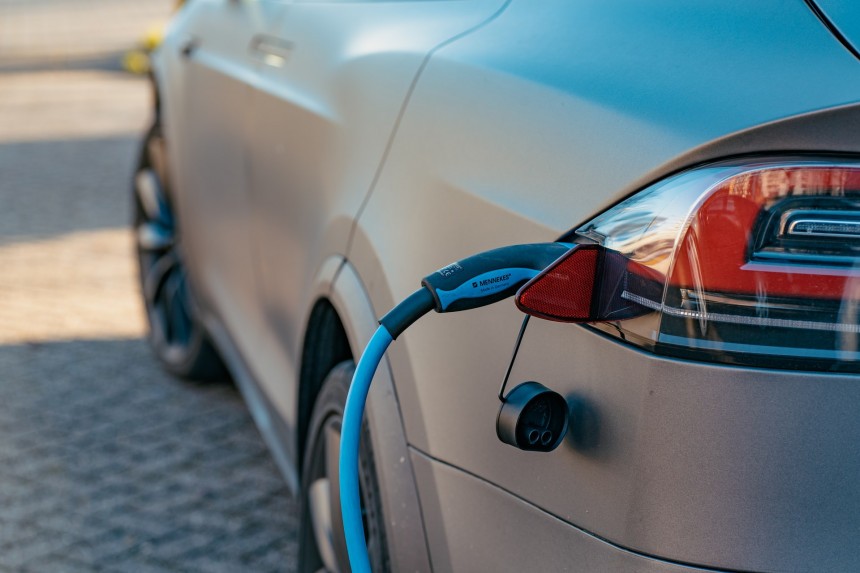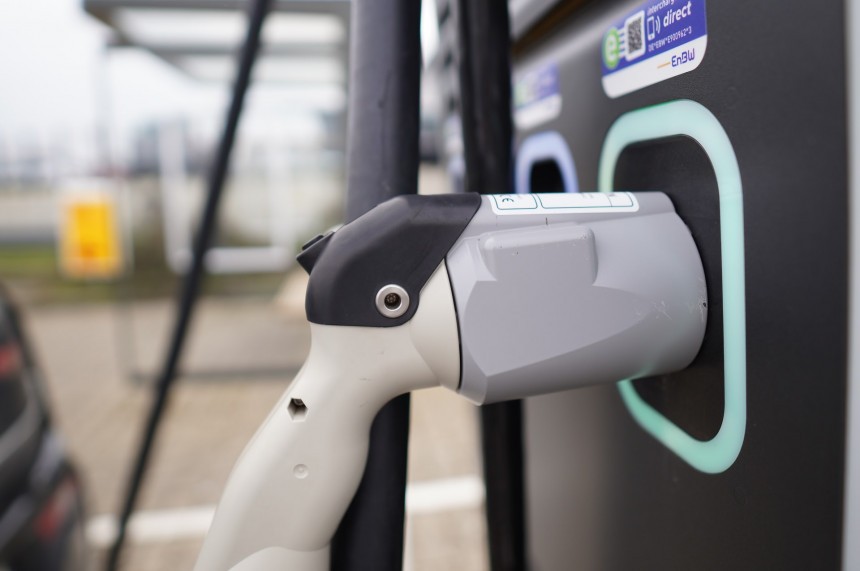When it comes to DC fast chargers, the more there are, the merrier. EV popularity is on the rise, which means more and more people will need access to electrons delivered as fast as possible. IONNA's launch is a good thing. Here's what you need to know.
In 2023, around 1.2 million Americans chose to buy an EV, and over 200,000 buyers picked a plug-in hybrid (PHEV), per the Department of Energy. When writing, there are over four million electric vehicles (EVs and PHEVs) on American roads. Hopefully, many of them can charge at home or at work because these drivers share around 170,000 electricity dispensers. The same source claims that around 900 chargers are added to the national charging network each week. So, there's that.
Sadly, most manufacturers didn't join the charging race when they should have. Tesla was courageous and inspired to throw serious money at a comprehensive network of DC dispensers. Superchargers helped the world's most valuable automaker impose on its peers and forced them to adopt its charging port, now known as the North American Charging Standard (NACS). Talk about a win!
Fortunately, US government experts understood that zero-emission vehicles couldn't become mainstream if only one company was making great strides. Changing what we drive is instrumental to fighting global warming. Simply put, consuming electrons is better than burning gas or diesel. So, instead of fining VW into the ground for the Dieselgate scandal (remember BlueMotion?), the US forced the German carmaker to invest $2 billion in launching a competitor for Tesla's Supercharger network. That's how Electrify America was born.
Sadly, Tesla was on a mission of its own, while VW was compelled to give drivers a charging alternative. That resulted in all kinds of problems for owners of EVs equipped with the CCS Combo 1 connector. Dispensers not working, shoddy software, weird charges, confused labeling, and little to no maintenance forced those who did not want to follow Tesla's lead to join forces with it eventually.
However, that's not enough. Automakers figured out they needed to do more. Take Porsche or Mercedes-Benz as an example. Both brands launched their own version of premium high-power charging stations. Considering that Electrify America kept having reliability issues and competitors like ChargePoint or FLO didn't rise up to the challenge, their initiatives were welcomed. Even now, many hope that the Germans will expand their bespoke charging services.
But as time went by, Tesla became the undisputed leader in the fast-charging business, and the European Ionity network showed that a collaborative effort could net favorable results for everyone. So, carmakers realized they could easily become the new Shell or British Petroleum (BP). But it took them a while.
But the brands didn't wait around or stalled the initiative intentionally. They just needed all the regulatory approvals before commencing the work.
IONNA officials say that each site will feature multiple high-power chargers to facilitate long-distance journeys, "aligning with the sustainability strategies of all seven automakers."
IONNA also promises "a seamless, vehicle-integrated, best-in-class charging experience," which in non-corporation lingo should translate into a plug-and-play feature that allows customers to start charging immediately. They might not need any apps or additional confirmations.
Given that Stellantis recently announced that it would adopt Tesla's charging port, we expect the dispensers to be equipped with it instead of the CCS Combo 1. They might also have an output of around 350 kW or more because most auto brands involved in the project have batteries boasting the 800V architecture.
The latter might be based on what third parties can offer because the new entity is also looking for partners, which means businesses can help with real estate and some support work in exchange for a part of the revenue.
There's no indication of the cost of a kWh or how the pricing will work. We don't even know if these seven brands will abandon VW's Electrify America and continue to offer new car buyers the perk of free charging for a limited time after its stalls are up and running. That remains a possibility, though!
Finally, IONNA has a leader. It's Seth Cutler, a former senior VP at EV Connect, the company behind the app that promised to offer more kWh for less money. He also worked at Electrify America and started his professional career at General Electric. It remains to be seen how his tenure will be. We can only hope for the best.
Sadly, most manufacturers didn't join the charging race when they should have. Tesla was courageous and inspired to throw serious money at a comprehensive network of DC dispensers. Superchargers helped the world's most valuable automaker impose on its peers and forced them to adopt its charging port, now known as the North American Charging Standard (NACS). Talk about a win!
Fortunately, US government experts understood that zero-emission vehicles couldn't become mainstream if only one company was making great strides. Changing what we drive is instrumental to fighting global warming. Simply put, consuming electrons is better than burning gas or diesel. So, instead of fining VW into the ground for the Dieselgate scandal (remember BlueMotion?), the US forced the German carmaker to invest $2 billion in launching a competitor for Tesla's Supercharger network. That's how Electrify America was born.
Sadly, Tesla was on a mission of its own, while VW was compelled to give drivers a charging alternative. That resulted in all kinds of problems for owners of EVs equipped with the CCS Combo 1 connector. Dispensers not working, shoddy software, weird charges, confused labeling, and little to no maintenance forced those who did not want to follow Tesla's lead to join forces with it eventually.
But as time went by, Tesla became the undisputed leader in the fast-charging business, and the European Ionity network showed that a collaborative effort could net favorable results for everyone. So, carmakers realized they could easily become the new Shell or British Petroleum (BP). But it took them a while.
A (late or timely?) step in the right direction
Enter IONNA, Ionity's estranged sibling. BMW, General Motors, Honda, Hyundai, Kia, Mercedes-Benz, and Stellantis will use the new company to erect around 30,000 dispensers across the entire US. Sadly, there's no timetable. The only thing that we got from IONNA is the promise of opening its first location in 2024. It'll expand to Canada "at a later date." That's exactly what we heard last year when we told you about this initiative for the first time.But the brands didn't wait around or stalled the initiative intentionally. They just needed all the regulatory approvals before commencing the work.
IONNA officials say that each site will feature multiple high-power chargers to facilitate long-distance journeys, "aligning with the sustainability strategies of all seven automakers."
Given that Stellantis recently announced that it would adopt Tesla's charging port, we expect the dispensers to be equipped with it instead of the CCS Combo 1. They might also have an output of around 350 kW or more because most auto brands involved in the project have batteries boasting the 800V architecture.
Fingers crossed
If things work out as planned, IONNA should become a brand EV owners will look out for every time they're road-tripping. The automakers behind the project intend to create a place where you will feel welcomed. Travelers will find restrooms, food service, canopies with strong illumination, and might even have access to retail operations.The latter might be based on what third parties can offer because the new entity is also looking for partners, which means businesses can help with real estate and some support work in exchange for a part of the revenue.
There's no indication of the cost of a kWh or how the pricing will work. We don't even know if these seven brands will abandon VW's Electrify America and continue to offer new car buyers the perk of free charging for a limited time after its stalls are up and running. That remains a possibility, though!
Finally, IONNA has a leader. It's Seth Cutler, a former senior VP at EV Connect, the company behind the app that promised to offer more kWh for less money. He also worked at Electrify America and started his professional career at General Electric. It remains to be seen how his tenure will be. We can only hope for the best.

















